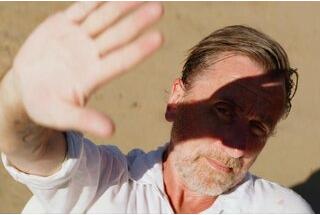Director of photography Kevin Brunet speaks to Panavision France about project "Omega x Orbis", by Gianluca Matarrese
How did you get involved in the project ?
Kevin Brunet : The Omega x Orbis project is a hybrid project produced by the Kind Paris agency (Titem Mouici, Julien Pasquier and Caroline Flak). It is in fact a 26-minute advertising documentary film, highlighting the commitment of the Omega company to the Orbis medical group which operates its hospital plane for children with visual problems. As with any advertising project, several directors were put into competition. Gianluca Matarrese won it and since I have been photographing his films for several years now, he proposed my candidacy to Omega and Kind who accepted it and who placed total trust in me. It is very important for an operator to feel complete trust from customers and production. This allowed me to bring the visual universe of Gianluca’s documentaries while having a very advertising aesthetic.
How would you describe the look of the project ?
KB : The look of the project is quite close to the work we do with Gianluca, between documentary and fiction. Gianluca has a real graphic expectation and we have already been discussing his style for several years. But it was necessary to introduce an advertising aspect that he did not necessarily have in his work, with a search for beauty plans and an aesthetic that sometimes comes close to lifestyle. The idea was to have a very stylish and recognizable image with a real identity. It is a film which shows the commitment of doctors and people who invest in accessibility to cutting-edge medicine. We didn’t just have to film and report on a situation, but we had to tell the story of a commitment, that of the doctors, Orbis and Omega. We therefore had to make a film with a real look, of which all the protagonists would be proud.

Were there any particular visual references that you looked to for inspiration ?
KB : Yes, there were a lot of visual references, atmospheric ideas and a mood board was put in place by Gianluca, Adrien Chibatte (Prod Director) and Julien Pasquier (Producer). For my part, the ultimate reference for inspirational film is Bruno Aveillan. I have always admired his work and I wanted to bring a very suave and very contemplative side that I perceive in his work. But we were still working on a documentary, so I greatly refined the Aveillan "style", to stay within the idea of the documentary film. We work a lot informally with Gianluca and I looked at a lot of images from photojournalists. The idea of photojournalism is omnipresent in this film.

What brought you to Panavision for this project ?
KB : I almost always work in Panavision, I was trained at Panavision, I grew up in the 90s with films shot in Panavision. My work is imbued with the Panavision look. It’s very complicated for me to work with other equipment because it’s optics that speak to me. Of course, there are many manufacturers who make incredible optics (Angénieux, Cooke, Hawk, Zeiss...) but I almost always see my work in Panavision...

What attracted you to the specific lenses you chose ?
KB : I chose the Ultra Speed and Super Speed, they are lenses that I love. The series is complex because it is not necessarily homogeneous in terms of weight and size, but it is such a special series. They have the Panavision identity while being ultra stylish. These are vintage lenses, so they are much more stylish than Primo L or more contemporary series. They have a sharpness and softness specific to Panavision, blacks of beautiful density and a magnificent flare. These optics are my favorite Super35 spherical optics. We used them for Gianluca’s last film, and it was obvious to us. Like me, Gianluca loves the rendering of this series. The 200mm is an exceptional lens which was the common thread of this film.

What inspired you to become a cinematographer and what inspires you today ?
KB : I always wanted to be a Director of Photography, I did all my schooling in this direction, and I never imagined myself doing anything else. I do not know how to explain it. My parents founded a circus (Archaos) at the end of the 80s and I loved observing, watching the staging, the lighting, the backstage and I understood very early on that I couldn’t do anything else. But the circus never fascinated me, I always had difficulty projecting myself into this universe. For me, cinema was obvious, I spent days watching and rewatching VHS tapes of Charlie Chaplin, Harold Lloyd and all burlesque cinema... I was fascinated by the ingenuity of the operators of this period. Afterwards, I grew up in the 90s, so I was influenced by operators like Darius Khondji, Emmanuel Lubezki, Christopher Doyle, Robert Richardson, Roger Deakins... At university I discovered more naturalistic operators like Robby Müller and Néstor Almendros. Having completed a double university course (Cinema / Art History) I was also greatly influenced by painters. Painting has a very big influence on my work, in my preparation and my exchanges with directors. I have always seen the job of Director of Photography as a continuation of the job of Studio Painter. So, from Caravaggio to Kirschner via Caspar David Friedrich, all periods, trends and eras have a great influence depending on the theme, idea and concept of the film photographed.

 En
En Fr
Fr






